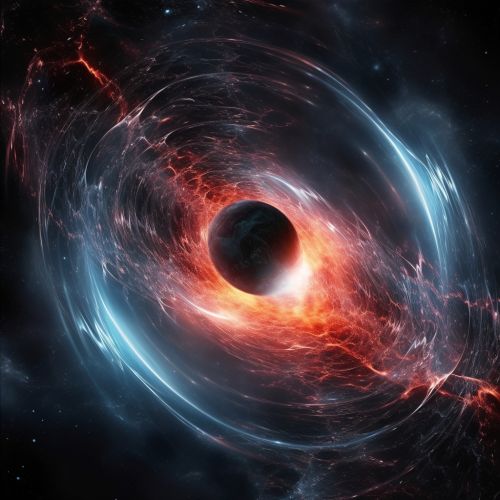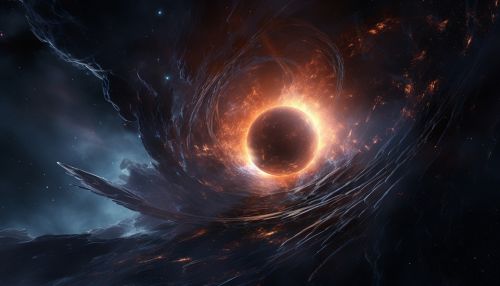Hawking Radiation
Introduction
Hawking Radiation, named after physicist Stephen W. Hawking, is a theoretical prediction that black holes are not completely black, but emit small amounts of thermal radiation due to quantum effects near the event horizon. This radiation is now known as Hawking radiation.


Quantum Field Theory in Curved Spacetime
Hawking radiation is derived from Quantum Field Theory (QFT) in curved spacetime, a theory that merges quantum mechanics and general relativity. It provides a theoretical framework for understanding how particles emerge from the gravitational field of a black hole.
Black Hole Thermodynamics
The discovery of Hawking radiation led to the development of black hole thermodynamics. These laws, analogous to the laws of thermodynamics, describe the behavior of black holes in terms of temperature, entropy, and energy.
Particle Creation Near Black Holes
The process of Hawking radiation is closely related to the concept of particle creation in QFT. Near a black hole, quantum fluctuations can result in pairs of particles and antiparticles. One of these may fall into the black hole while the other escapes, resulting in the appearance of radiation.
Information Paradox
The black hole information paradox arises from the combination of quantum mechanics and general relativity. It suggests that information about matter that has fallen into a black hole is lost, contradicting the principle of quantum mechanics that information can never be lost.
Conclusion
Hawking radiation has profound implications for our understanding of black holes, quantum mechanics, and the nature of the universe. Despite its theoretical nature, it has spurred a great deal of research and debate in the field of theoretical physics.
